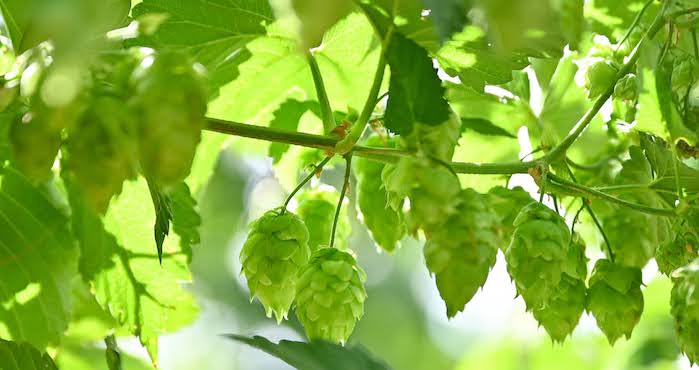Hop Science Newsletter (September 2019)
In this issue: the potential in dry hopping and sustainability in hops production.

THE POTENTIAL IN DRY HOPPING
The different growing regions of hop production also use different techniques for hop drying after harvest. This US Team did a comparison of different kilning procedures. In the US the traditional hop method is to pile them 60-80 cm in large boxes and to run through the beds with air heated to 48-66 °C. This can result in uneven drying with bottom hops having 5% moisture and the hops at the top having up to 20% moisture. Overheating the hops can result in the formation of off-flavors like onion/garlic. In comparison, drying hops with unheated and dehumidified air results in a less than 1% moisture difference between the top and bottom of the bed. However, this system is energy intensive and takes up to 48hrs in comparison to up to 13 hrs for the traditional method. The system in Germany/Europe consists of using three drawers of hops with a height of 30 cm each that are dried and then dropped to the second tier as a new load of hops is loaded into the top tier. Again, after partial drying, the middle tier is dropped to the lowest tier, the top tier to the middle, and the top once again reloaded. This system results in very homogenous moisture levels but in terms of energy consumption appears to be slightly above the US system. This study thoroughly compares all three systems in terms of energy consumption showing all pros and cons in terms of hops quality. Obviously, for all systems there is still room for improvement.¹
SUSTAINABILITY IN HOPS PRODUCTION
To compare the energy consumption of hop drying is part of a holistic sustainability review of hop production. This US team looked into the general sustainability challenges in beer production including hops production. Sustainability is often thought of solely in context of the environment, but it is recognized to encompass the integration of economic development, social development, and environmental protection, which are referred to as the three pillars of sustainability. If we look at it from an environmental perspective the method of LCA (life cycle analysis) is often used, which means to look at the different parts/ingredients from “cradle to grave.” The brewery, in general, is a large consumer of water and energy. Published figures are 8-12 kWH, 5hl of water 150 MJ of fuel energy to produce 1 hl of beer plus 13,6kg of spent grain and 4 kg of spent yeast produced. Speaking in Carbon foot print a published study indicates that packaging accounts for 40%, and raw materials for 22% (mainly barley). Although the impact of hops was found to be small in this review, the quantity of hops required for brewing hop forward beers is much higher. A beer with 110 g of hops/hl of beer can equal 0.2% of the total carbon footprint. A tenfold usage of hops of 1.1kg/hl beer would mean 2% of the total carbon footprint. Parameters for hops production are machinery, irrigation, fertilization, soil emissions and pesticides usage and kilning. Overall estimates of emissions equivalents ranged from ~3.5 to 5.5 kg of CO2e per kilogram of hops in all cases, estimates were substantially higher than literature values for the production of malt on a kilogram per kilogram basis, which were reported by TCC as 0.91 kg of CO2e per kilogram. Meanwhile, the hop industry is providing sustainability reports..²
EVENTS:
Hop Flavourist Course – Level 1, German/English, Nuremberg 25/26th of November:
The Hop Flavourist Course is meant to train your sensory memory and language for hops. Get to know the most important hop varieties from an aroma point of view. Learn our aroma language of hops – Hopsessed. You will gain in depth knowledge about the relevant varieties. Learn to train and to use your sensory skills to describe hop varieties and hop forward beers in great detail and get into the position to create yourself exciting hop flavours in the brewing process. https://www.barthhaasgroup.com/de/hops-academy#termine
Brau Beviale – Guided Tasting:
Join us in our guided Tastings this year at Brau Beviale. We will show you how to create maximum hop flavour with minimum beer losses. The tastings fill up quickly so make sure you reserve a spot for you and your colleague. https://www.barthhaasgroup.com/de/hops-academy#termine
REFERENCES



